جاهای دیدنی تهران
جاهای دیدنی تهرانجاهای دیدنی تهران
جاهای دیدنی تهرانGynecomastia Treatment Without Surgery
Gynecomastia in Iran, the enlargement of male breast tissue, can be a source of physical and psychological discomfort for many individuals. While surgical intervention is often considered the most effective treatment option for severe cases, non-surgical approaches for gynecomastia treatment without surgery are available for those who prefer to avoid surgery or have milder forms of gynecomastia. These non-surgical treatments aim to address the underlying causes of gynecomastia or alleviate its symptoms without the need for invasive procedures.
Can You Get Gynecomastia Treatment Without Surgery?
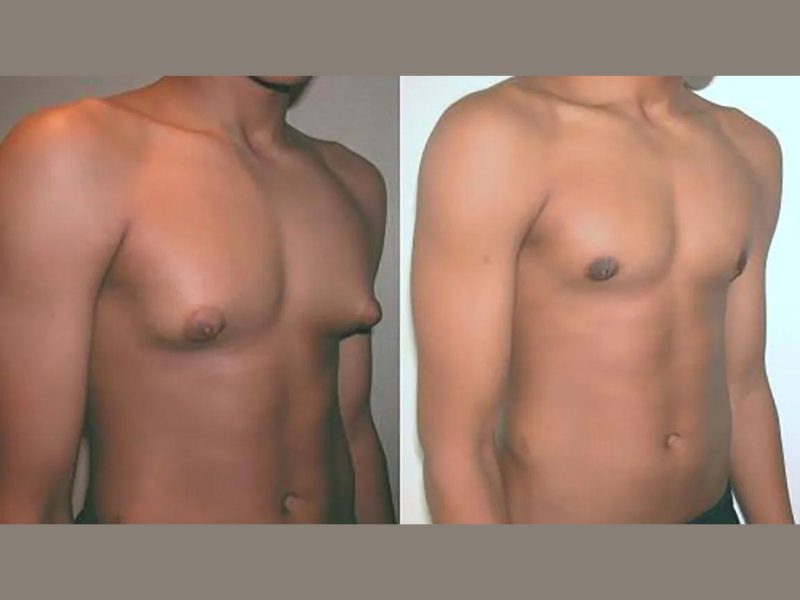
Avamedi offers multiple other services such as Rhinoplasty in Iran.
Yes, it is possible to receive treatment for gynecomastia without surgery, depending on the underlying cause and severity of the condition. Non-surgical treatment options are available and can be effective in some instances. These treatments aim to address hormonal imbalances, reduce breast tissue growth, or alleviate symptoms associated with gynecomastia. Non-surgical approaches for gynecomastia treatment may include medications, lifestyle changes, hormone therapy, compression garments, and psychological support. However, it’s important to note that the effectiveness of non-surgical treatments may vary depending on individual circumstances, and in some cases, surgical intervention may be necessary for optimal results.
Consulting with a healthcare professional or a specialist in hormonal disorders or plastic surgery can help determine the most appropriate treatment approach for your specific situation.
Does The Non-surgical Option Help With Gynecomastia?
Non-surgical options for gynecomastia treatment without surgery can be effective in some instances, but their success depends on factors such as the underlying cause and severity of the condition. Here are some non-surgical treatments and their potential benefits:
- Medications: Certain medications, such as tamoxifen, raloxifene, or aromatase inhibitors, may help reduce breast tissue growth or address hormonal imbalances that contribute to gynecomastia. These medications can be effective in some individuals, especially when hormonal imbalances are the primary cause of gynecomastia.
- Lifestyle changes: Making lifestyle modifications, such as maintaining a healthy weight, exercising regularly, and avoiding substances that can contribute to gynecomastia (e.g., alcohol, anabolic steroids), can help reduce the symptoms and severity of gynecomastia.
- Hormone therapy: Hormone replacement therapy (HRT) or testosterone replacement therapy (TRT) may be utilized to balance hormone levels and alleviate gynecomastia symptoms caused by hormonal imbalances. These treatments can be effective for individuals with hormone-related gynecomastia.
- Compression garments: Wearing compression garments, such as compression vests or shirts, can help flatten the appearance of the chest and provide temporary relief from gynecomastia. They can be beneficial for individuals who experience discomfort or self-consciousness due to gynecomastia.
- Psychological support: Gynecomastia can have significant psychological impacts. Seeking counseling or joining support groups can help individuals address body image concerns, improve self-esteem, and cope with the emotional aspects of gynecomastia.
While non-surgical treatments can be beneficial for some individuals, it’s important to note that their effectiveness may vary. In cases where gynecomastia is severe or persistent, surgical intervention may be necessary to achieve the desired results. Consulting with a healthcare professional or a specialist in hormonal disorders or plastic surgery can help determine the most suitable treatment approach based on individual circumstances.
Gynecomastia Treatment Without Surgery At Home: 7 Ways
While it is always recommended to consult with a healthcare professional for proper evaluation and guidance, here are seven potential ways to manage gynecomastia at home without surgery:
- Exercise and strength training: Engaging in regular exercise and strength training can help reduce overall body fat and promote muscle development, potentially improving the appearance of gynecomastia.
- Healthy diet: Maintaining a balanced and nutritious diet can contribute to overall weight management and potentially reduce fat deposits in the chest area. Focus on consuming whole foods, lean proteins, fruits, vegetables, and healthy fats.
- Weight loss: If excess weight is a contributing factor to gynecomastia, losing weight through a combination of diet and exercise may help reduce the size of the breasts.
- Avoiding hormone-disrupting substances: Limiting exposure to substances that can disrupt hormone levels, such as alcohol, anabolic steroids, and certain medications, may help manage gynecomastia.
- Herbal remedies: Some herbal remedies like green tea extract, turmeric, and ginkgo biloba have been suggested to have potential anti-estrogenic properties and could be explored as complementary treatments. However, their efficacy and safety should be discussed with a healthcare professional.
- Compression garments: Wearing compression garments, such as compression vests or shirts, can help flatten the appearance of the chest and provide temporary relief from gynecomastia.
- Emotional support: Gynecomastia can have a psychological impact. Seeking emotional support through counseling or joining support groups can help individuals cope with body image concerns and improve self-esteem.
It is important to note that these home-based approaches may not be practical for all cases of gynecomastia. Consulting with a healthcare professional or a specialist in endocrinology or plastic surgery is crucial for accurate diagnosis and personalized treatment recommendations.
Tips On How To Make Your Gynecomastia Less Noticeable
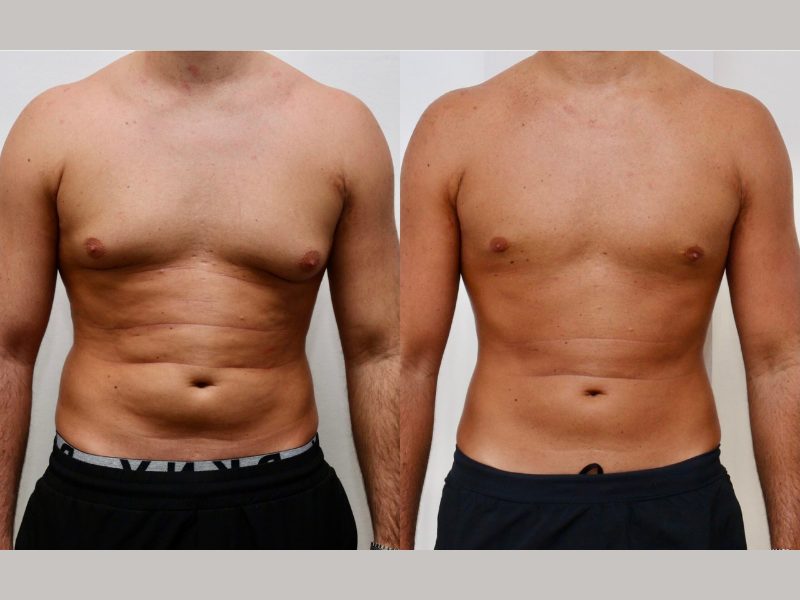
If you have gynecomastia and want to make it less noticeable, here are some tips that may help:
- Wear appropriate clothing: Choose clothing styles that can help minimize the appearance of gynecomastia. Opt for loose-fitting shirts or tops with patterns, textures, or prints that can camouflage the chest area.
- Layer clothing strategically: Layering clothing can help create visual depth and distract attention from the chest. For example, wearing a well-fitted undershirt or compression garment underneath your regular shirt can provide a smoother appearance.
- Use compression garments: Consider wearing compression vests or shirts designed explicitly for gynecomastia. These garments apply gentle pressure and can help flatten the chest area, making gynecomastia less noticeable.
- Posture and body language: Pay attention to your posture and body language. Standing up straight with good posture can help give the appearance of a flatter chest. Avoid slouching or hunching over, as it may accentuate the appearance of gynecomastia.
- Exercise and strength training: Engaging in regular exercise and strength training can help improve overall body composition and muscle tone. Specifically, targeting the chest muscles through exercises like push-ups or chest presses may help provide a more defined appearance.
- Maintain a healthy weight: Maintaining a healthy weight can help reduce overall body fat, including in the chest area. Focus on a balanced diet and regular physical activity to achieve and maintain a healthy weight.
- Confidence and self-acceptance: Remember that gynecomastia is a common condition and does not define your worth or masculinity. Cultivate self-confidence and practice self-acceptance. Embrace your body and focus on the qualities that make you unique.
Conclusion
In conclusion, gynecomastia, the enlargement of male breast tissue, can be managed without surgery through various non-surgical treatments. Gynecomastia treatment without surgery
may include medications, lifestyle changes, hormone therapy, compression garments, and psychological support. While their effectiveness can vary depending on individual circumstances, they can be beneficial for some individuals. It’s essential to consult with a professional online healthcare provider, like Avamedi, or a specialist to determine the most suitable treatment approach. Additionally, there are tips to make gynecomastia less noticeable, such as wearing appropriate clothing, layering strategically, using compression garments, maintaining good posture, engaging in exercise and strength training, maintaining a healthy weight, and cultivating confidence and self-acceptance.
Understanding Facelift Scars in Front of Ears
Considering a facelift in Iran to rejuvenate your appearance? One common concern is the visibility of Facelift Scars in Front of Ears. Driven by a commitment to preserving your unique facial features while achieving a naturally refreshed look, our approach at AvaMedi Health Group prioritizes patient satisfaction and discreet incision placement.
What are Facelift scars in front of ears?
Facelift surgery, also known as rhytidectomy, is a cosmetic procedure designed to address sagging and wrinkles in the face and neck. Like any surgical procedure, facelifts can leave scars, and one common area for these scars is in front of the ears. Here’s some information about facelift scars in front of ears:
- Location of Scars: In a traditional facelift, incisions are typically made in inconspicuous locations, such as in the hairline and around the ears. The incision in front of the ears is carefully placed to follow the natural contours of the ear, helping to minimize the visibility of scars.
- Incision Technique: Surgeons often use meticulous techniques to ensure that the incisions are well-hidden. They may follow the natural creases and curves in front of the ears to make the scars less noticeable.
- Scarring Variation: The degree of scarring can vary from person to person, and factors such as skin type, genetics, and individual healing processes play a role. However, skilled surgeons aim to create scars that are discreet and easily concealed.
- Postoperative Care: Proper postoperative care is essential for minimizing scarring. Surgeons provide specific instructions on how to care for the incisions, including keeping them clean, avoiding sun exposure, and using recommended scar care products.
- Scar Maturation: Scars go through a maturation process, and they often appear more noticeable in the early stages of healing. Over time, scars tend to fade and become less prominent.
- Hair Growth: For individuals with hair in front of the ears, this can help further conceal the scars. Surgeons take this into consideration when planning incision placement.
- Individual Variation: Each person’s skin reacts differently to surgery, and while efforts are made to create inconspicuous scars, there can be variations in how scars heal and fade.
- Revision Options: In some cases, if a patient is unhappy with the appearance of scars after healing, revision procedures may be considered to improve the outcome.
It’s important for individuals considering facelift surgery to have a thorough discussion with their surgeon about incision placement, scarring, and postoperative care. A skilled and experienced surgeon will take steps to minimize scarring and provide guidance on scar management to optimize the aesthetic outcome of the facelift.
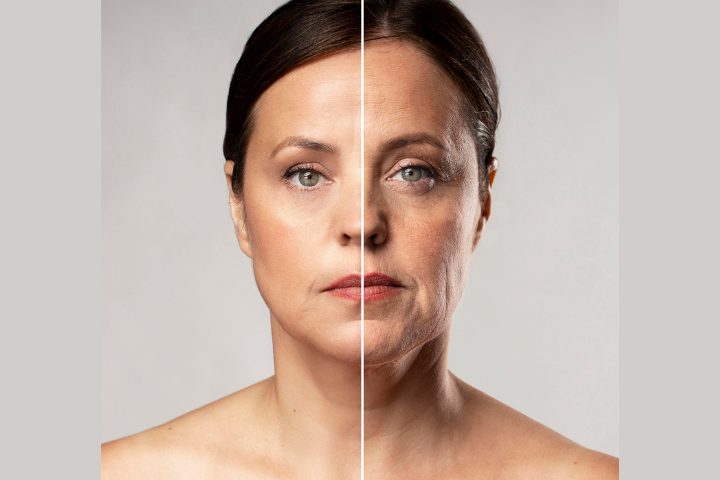
Avamedi offers multiple other services such as revision rhinoplasty in Iran.
Placement of facelift scars in front of ears
Dr.Goravanchi which is one of the most famous AvaMedi`s plastic surgeons, emphasizes the importance of personalized incision patterns. Whether for men or women, incisions typically follow specific areas such as behind the ears, along the tragus, in or along the sideburn, and along the hairline. Tailoring each incision to factors like facial improvement goals, hairstyle, and skin quality ensures optimal outcomes.
While facelift scars in front of ears are inevitable with any surgery, the trade-off for enhanced facial contours and tightening is significant. Dr.Goravanchi emphasizes the importance of patient education and understanding this trade-off during early consultations. The goal is to achieve facial improvement while minimizing the appearance of scars.
How bad are facelift scars in front of ears?
The visibility and severity of facelift scars in front of ears can vary depending on several factors, including the surgical technique used, individual healing processes, and how well postoperative care instructions are followed. Here are key considerations regarding scars from a facelift:
- Individual Variability: Every individual heals differently, and genetics play a role in how scars form. Factors such as skin type, age, and overall health can influence the appearance of scars.
- Surgical Technique: The specific surgical technique employed by the surgeon can impact the visibility of scars. Skilled surgeons aim to place incisions in discreet locations and use meticulous closure methods to minimize scarring.
- Incision Placement: The placement of incisions is a crucial factor. In a traditional facelift, incisions are typically made in areas that can be easily concealed, such as along the hairline and behind the ears. Modern techniques often involve shorter incisions and advanced closure methods to further minimize scarring.
- Postoperative Care: Following proper postoperative care instructions is essential for optimal healing and scar minimization. This includes keeping the incisions clean, avoiding sun exposure, and using recommended scar care products.
- Scar Maturation: Scars go through a maturation process, and their appearance can change over time. Initially, scars may appear red and raised, but they typically fade and flatten with time.
- Patient Compliance: How well patients adhere to postoperative care instructions, attend follow-up appointments, and avoid activities that may strain the healing incisions can impact the final appearance of scars.
- Surgeon’s Skill and Experience: The expertise of the surgeon is a critical factor. Experienced surgeons with a focus on aesthetic outcomes are likely to have strategies to minimize scarring and achieve natural-looking results.
- Hair Growth: For incisions made around the hairline and in front of the ears, the presence of hair can help conceal scars. Surgeons often consider hair growth patterns when planning incisions.
- Revision Options: In some cases, if patients are dissatisfied with the appearance of scars, revision procedures may be considered to improve their visibility.
It’s important for individuals considering a facelift to have realistic expectations and thoroughly discuss scar management with their surgeon during the consultation. While scars are an inevitable part of the surgery, advancements in techniques and postoperative care have significantly reduced their visibility. Skilled surgeons aim to achieve natural-looking results with minimal scarring, allowing patients to enjoy the rejuvenating effects of a facelift with confidence.
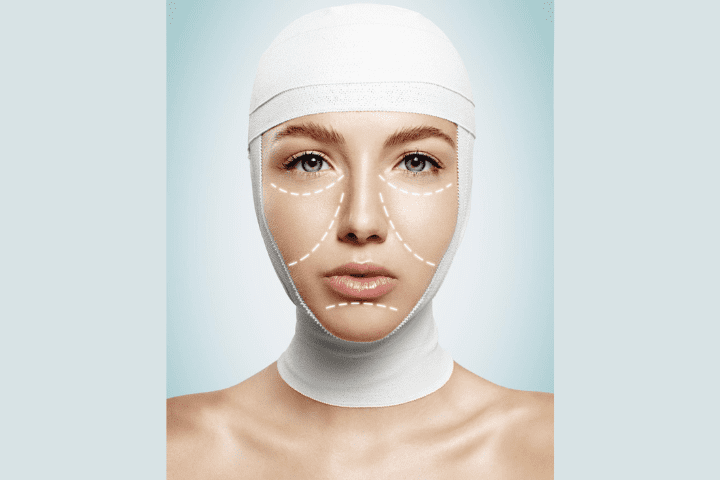
Avamedi offers multiple other services such as Rhinoplasty in Iran.
SOURCE:Understanding Facelift Scars in Front of Ears
Understanding Facelift Scars in Front of Ears
What is the best non-surgical facelift In Iran?
In a world where time’s touch can be beautifully gentle or frustratingly unforgiving, the quest for eternal youth has inspired countless tales and legends. But what if the elixir of youth wasn’t a mythical potion, but a refined art, accessible without the surgeon’s scalpel? Enter the world of best non-surgical facelift in iran, a realm where science and artistry conspire to turn back the clock, one gentle touch at a time.
The Artistry of best Non-Surgical Facelifts In Iran
In a world where time’s touch is both a blessing and a challenge, non-surgical facelifts offer a unique path to timeless beauty. They’re not just treatments; they’re a fusion of science and artistry, where individuality and natural beauty are celebrated. The elixir of youth is not a myth but a masterful blend of innovation, expertise, and personal expression.
The Age-Old Quest for Beauty
Our fascination with eternal youth has deep historical roots. From the fabled Fountain of Youth to Cleopatra’s infamous beauty rituals, humanity has sought ways to defy the march of time. In today’s world, the desire to age gracefully remains as powerful as ever. Enter non-surgical facelifts, an innovation that promises rejuvenation without the incisions.
Non-Surgical Facelifts Demystified
What exactly are non-surgical facelifts, and how do they work? This chapter delves into the world of Botox, dermal fillers, and thread lifts, uncovering the science behind these treatments. We explore how Botox relaxes wrinkles, dermal fillers restore volume, and thread lifts defy gravity with dissolvable threads. It’s an artistic science that aims to enhance your natural beauty, without the knife.
The Botox Ballet
Botox, a household name, is more than just a wrinkle-reducer. In this chapter, we reveal its versatility, from smoothing out frown lines to treating excessive sweating and migraines. We also debunk common misconceptions and explore the delicate dance between science and artistry that Botox injections represent.
Dermal Fillers: The Artists of Volume
The world of dermal fillers is a gallery of artistry. We unravel the beauty of hyaluronic acid, exploring its role in adding volume to cheeks and plumping lips. Discover how Sculptra stimulates collagen for gradual but long-lasting results. It’s an art form that sculpts, restores, and redefines facial contours.
Thread Lifts: A Symphony of Support
Thread lifts are like the invisible hands of time. In this chapter, we examine how dissolvable threads lift and tighten sagging skin, restoring youthful contours. We also uncover the secret ingredient: collagen stimulation. Thread lifts are more than a treatment; they’re a symphony of support and restoration.
The Trailblazers: Ultherapy and Radiofrequency
Ultherapy and radiofrequency treatments offer non-invasive solutions that heat up the market. We explore how ultrasound and radiofrequency energy stimulate collagen production, leading to tighter skin. These innovative techniques are changing the landscape of non-surgical facelifts.
A Canvas of Options: Microcurrent, Peels, and Laser Resurfacing
The world of non-surgical facelifts is a canvas of options. Microcurrent therapy, chemical peels, and laser resurfacing each contribute to the artistry. We dive into their unique approaches and the results they offer. This chapter sheds light on their role in the tapestry of non-surgical beauty.
The Natural Alchemy of PRP and Cryotherapy
Sometimes, nature knows best. Platelet-rich plasma (PRP) therapy and cryotherapy harness the body’s natural capabilities to rejuvenate the skin. PRP therapy, often called the “vampire facial,” uses your blood’s healing properties. Cryotherapy uses extreme cold to stimulate collagen production. It’s a tale of natural alchemy in the realm of non-surgical facelifts.
Beyond Beauty: The Psychological Impact
Non-surgical facelifts are more than skin-deep. They impact not only appearance but also self-esteem and confidence. In this chapter, we explore the psychological transformation that often accompanies physical rejuvenation. It’s a profound journey of self-discovery and newfound self-assurance.
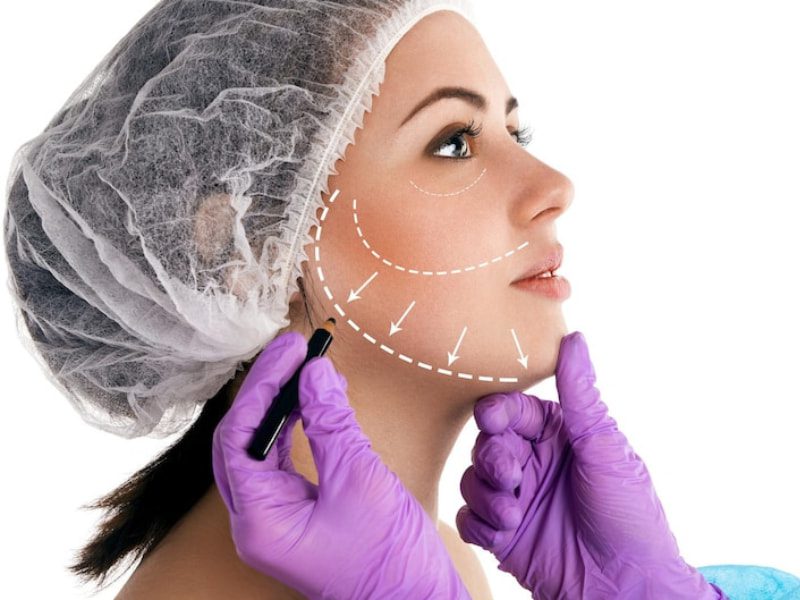
Avamedi offers multiple other services such asRhinoplasty in Iran, revision rhinoplasty in Iran.
Advantages of the Non-Surgical Facelift In Iran
The quest for timeless beauty has ushered in a new era of non-surgical facelifts, offering a plethora of advantages that have transformed the beauty industry. With the best non-surgical facelift procedures, individuals can enjoy remarkable benefits without the need for invasive surgeries and lengthy recoveries. Here, we explore the advantages of these innovative treatments, which have become the preferred choice for those seeking rejuvenation and renewal.
Natural-Looking Results
One of the most notable advantages of the best non-surgical facelifts is their ability to deliver natural-looking results. These treatments aim to enhance your existing features, restoring a youthful appearance without the artificial or “pulled” look often associated with traditional facelift surgeries. The artistry lies in preserving your unique beauty while subtly reversing the effects of aging.
Minimally Invasive Procedures
Non-surgical facelifts are minimally invasive, requiring no incisions, sutures, or general anesthesia. This means reduced risks, shorter recovery times, and minimal discomfort. Patients can often resume their daily activities shortly after their treatment, making these procedures incredibly convenient.
Immediate or Gradual Results
Depending on the specific treatment chosen, you can enjoy either immediate or gradual results. For example, dermal fillers provide instant volume and rejuvenation, while procedures like Ultherapy stimulate collagen production, leading to gradual but long-lasting improvements. The flexibility to choose the pace of your transformation is a significant advantage.
Customized Treatments
The best non-surgical facelift procedures are highly customizable. Your treatment plan is tailored to address your unique concerns and goals. Whether you want to target specific wrinkles, enhance facial contours, or achieve an overall refreshed appearance, these treatments can be personalized to meet your needs.
Short Recovery Periods
Traditional facelift surgeries often require weeks of downtime, which can be inconvenient and uncomfortable. Non-surgical facelifts, on the other hand, typically involve minimal to no downtime. This means you can return to your regular routine quickly, without the need for extended recovery periods.
Minimal to No Scarring
Since non-surgical facelifts do not involve surgical incisions, scarring is generally not a concern. This is especially appealing for individuals who wish to improve their appearance discreetly, without visible marks or scars.
Lower Costs
Compared to traditional facelift surgeries, non-surgical facelifts are more cost-effective. While the exact price varies based on the chosen treatment and location, they are generally more budget-friendly, making them accessible to a wider range of individuals.
Safe and FDA-Approved
The best non-surgical facelift treatments are safe and FDA-approved. They have undergone rigorous testing to ensure their effectiveness and safety. This regulatory approval provides peace of mind to those seeking these procedures.
Minimal Side Effects
Non-surgical facelift procedures typically involve minimal side effects. While some temporary redness, swelling, or bruising may occur, these effects are usually mild and short-lived. Patients can comfortably resume their activities shortly after their treatment.
- Rejuvenation Without the Knife
Perhaps the most significant advantage of the best non-surgical facelift is the ability to achieve facial rejuvenation without going under the surgeon’s knife. These treatments offer a path to a more youthful appearance without the risks and invasiveness associated with traditional surgeries.
Breast Augmentation Methods
What Is Breast Augmentation? Introduction Breast Augmentation Methods
Breast augmentation in Iran is a prevalent cosmetic surgery procedure designed to enhance breast size and shape through the use of either breast implants or fat transfer. Various types of implants and different breast augmentation methods are available, underscoring the importance of discussing personalized options with your surgeon to determine the most suitable approach for your needs.
What Are the Different Breast Augmentation Methods?
There are several methods of breast augmentation, each with its own techniques and considerations. The two primary approaches involve using breast implants or utilizing fat transfer. Here are the main methods:
Breast Implants:
Saline Implants: These implants are filled with sterile saline (saltwater) and can be adjusted after surgery. In case of a rupture, the saline is harmlessly absorbed by the body.
Silicone Gel Implants: These implants are filled with silicone gel, which closely resembles the natural feel of breast tissue. Silicone implants require regular monitoring to detect ruptures.
Structured Implants: These implants have an internal structure to provide a more natural feel. They consist of saline or silicone gel but have an additional layer to maintain their shape.
Fat Transfer:
Autologous Fat Transfer: This method involves liposuction to remove excess fat from one part of the body (e.g., abdomen, thighs) and injecting it into the breasts. It’s a more natural alternative and can be suitable for subtle enhancements.
Incision Techniques:
Inframammary Incision: The incision is made in the crease under the breast.
Transaxillary Incision: The incision is made in the armpit.
Periareolar Incision: The incision is made around the edge of the areola.
Placement Options:
Subglandular Placement: Implants are placed above the chest muscle.
Submuscular Placement: Implants are placed under the chest muscle.
The choice of method depends on factors such as personal preferences, body type, and desired outcomes. A thorough consultation with a qualified plastic surgeon is crucial to determine the most suitable method for an individual’s specific goals and circumstances.
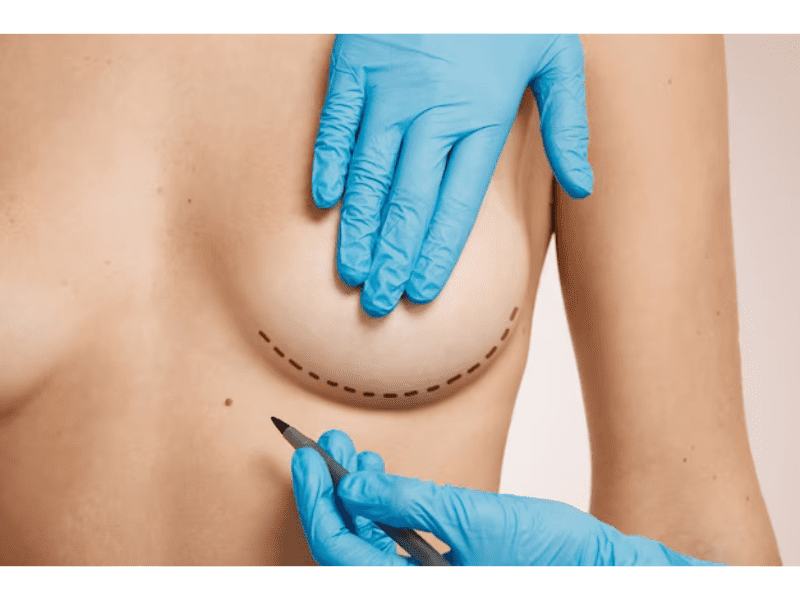
Avamedi offers multiple other services such asRhinoplasty in Iran, revision rhinoplasty in Iran.
Why Do People Get Breast Augmentation Methods?
People choose to undergo breast augmentation methods for various personal and aesthetic reasons. Here are some common motivations:
- Enhanced Self-Esteem and Confidence: Breast augmentation can contribute to improved self-esteem and body confidence. For some individuals, achieving their desired breast size and shape can enhance overall body image and satisfaction.
- Aesthetic Goals: Some people pursue breast augmentation to achieve a specific aesthetic ideal or to address asymmetry, volume loss, or other appearance-related concerns.
- Post-Pregnancy Changes: Pregnancy, breastfeeding, and weight fluctuations can affect breast appearance. Breast augmentation methods may help restore or enhance breast volume and shape for individuals who have experienced changes due to pregnancy or breastfeeding.
- Reconstruction after Mastectomy: Breast augmentation is a common procedure for women who have undergone a mastectomy (removal of the breast) due to breast cancer. It is a crucial step in breast reconstruction, helping restore a sense of normalcy and femininity.
- Improvement of Body Proportions: Some individuals seek different breast augmentation methods to achieve a more balanced and proportionate figure. This can involve enhancing the size and shape of the breasts to better complement the rest of the body.
- Correction of Congenital Issues: Individuals with congenital conditions or developmental differences in breast size may opt for breast augmentation to address asymmetry and achieve a more symmetrical appearance.
It’s important to note that each individual’s motivations for breast augmentation are unique, and the decision is a personal one. Before undergoing the procedure, individuals typically consult with a qualified plastic surgeon to discuss their goals, expectations, and any potential risks associated with the surgery.
How Common Are Breast Augmentation Methods?
Breast augmentation methods, which involve the surgical placement of breast implants to enhance the size and shape of the breasts, have become relatively common in many parts of the world. The popularity of breast augmentations has varied over time and across different cultures.
Factors influencing the prevalence of breast augmentations include cultural ideals of beauty, societal attitudes towards cosmetic surgery, and advancements in medical technology. In some societies, there may be a greater acceptance and normalization of cosmetic procedures, contributing to higher rates of breast augmentations.
In the United States, for example, breast augmentation has been one of the most popular cosmetic surgical procedures for several years. According to the American Society of Plastic Surgeons (ASPS) statistics, hundreds of thousands of breast augmentation procedures are performed annually in the U.S. However, it’s essential to note that the popularity of cosmetic procedures can change over time, and regional variations exist.
It’s important to approach such procedures with careful consideration, understanding the potential risks and benefits, and consulting with qualified medical professionals to make informed decisions based on individual needs and circumstances.
What Are the Side Effects of Breast Augmentation Methods?
Breast augmentation methods, like any surgical procedure, carry potential risks and side effects. It’s important for individuals considering breast augmentation to be aware of these factors and discuss them thoroughly with a qualified plastic surgeon. Some possible side effects and complications of breast augmentation methods include:
Pain and Discomfort:
Pain and discomfort are common in the initial days following surgery. This can be managed with prescribed pain medications.
Swelling and Bruising:
Swelling and bruising of the breasts are normal after surgery but typically subside over time.
Changes in Sensation:
Temporary or permanent changes in nipple or breast sensation, including increased or decreased sensitivity, may occur.
Infection:
There is a risk of infection at the surgical site. Proper hygiene and post-operative care can help minimize this risk.
Hematoma and Seroma:
Collection of blood (hematoma) or fluid (seroma) in the breast area may occur, requiring drainage in some cases.
Implant Rupture or Leakage:
Implants can rupture or leak, leading to changes in breast shape and requiring additional surgery to replace the implants.
Capsular Contracture:
The formation of scar tissue around the implant (capsule) may tighten, causing the breast to feel firm and potentially changing its appearance. Additional surgery may be needed to address this.
Implant Displacement or Malposition:
Implants may shift or move from their original placement, leading to asymmetry or an unnatural appearance.
Anesthesia Risks:
As with any surgery, there are risks associated with anesthesia, including allergic reactions and complications.
Breastfeeding Challenges:
Breast augmentation can potentially impact breastfeeding, and women considering the procedure should discuss this with their surgeon.
It’s crucial for individuals to carefully follow post-operative care instructions, attend follow-up appointments, and communicate any concerns with their healthcare provider. As you know it can be differences between various breast augmentation methods risks and possible side effects.
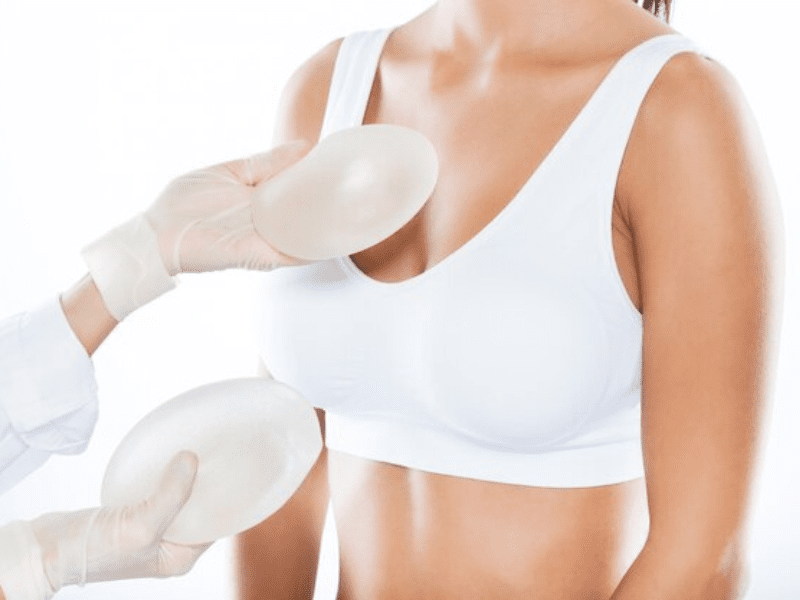
How Long Do Breast Augmentation Methods’ Results Last?
The longevity of breast augmentation methods results can vary from person to person and is influenced by factors such as the type of implants used, the surgical technique, and individual factors. While breast implants are not considered lifetime devices, they are designed to be durable and long-lasting. Here are some considerations regarding the longevity of breast augmentation methods results:
Implant Lifespan:
Breast implants are not guaranteed to last a lifetime. On average, manufacturers often provide warranties for around 10 to 20 years. However, many implants last longer without issues.
Routine Monitoring:
Regular monitoring and follow-up appointments with a healthcare provider are essential to assess the condition of the implants over time. This may include imaging studies, such as mammograms or ultrasounds.
Potential for Reoperation:
Some individuals may need additional surgeries (reoperations) during their lifetime. Reasons for reoperation may include implant rupture, changes in breast appearance over time, or personal preferences for adjustments.
Natural Aging and Changes:
The breasts undergo natural aging and changes over time, regardless of implants. Factors such as weight fluctuations, pregnancy, and aging can impact the appearance of the breasts.
It’s important for individuals with breast implants to be aware of the potential need for future surgeries and to communicate any changes or concerns to their healthcare provider promptly.
Regular check-ups and discussions with a qualified plastic surgeon or healthcare professional are crucial for ensuring the ongoing health and satisfaction of individuals who have undergone breast augmentation. If any issues or concerns arise, prompt consultation with a healthcare provider is recommended to address them appropriately.
source:Breast Augmentation Methods
تجهیزات کافی شاپ
برای یک کافیشاپ، تجهیزات مهمی وجود دارد که برای تهیه و ارائه قهوه و نوشیدنیهای دیگر ضروری هستند. به برخی از تجهیزات نیاز داریم که میتوانید برای تهیه آنها از گروه صنعتی شبستری کمک بگیرید، و تجهیزات مورد نیاز عبارتند از:
۱. دستگاه اسپرسو ساز صنعتی: یک دستگاه اسپرسو ساز صنعتی برای تهیه قهوه اسپرسو با کیفیت بالا از قطعات قهوه عبور میکند. دستگاههای اسپرسو ساز صنعتی دو گروپ یا چهار گروپ برای تهیه همزمان قهوه برای چندین مشتری مناسب هستند.
۲. آسیاب قهوه: آسیاب قهوه برای خرد کردن دانههای قهوه تا حد مورد نیاز برای تهیه قهوه استفاده میشود. آسیابهای قهوه عمودی یا افقی با قابلیت تنظیم درجه خردی برای تهیه اسپرسو، فیلتر قهوه و دیگر روشهای استخراج قهوه مورد استفاده قرار میگیرند.
۳. ماشین فرمینگ شیر: ماشین فرمینگ شیر برای تولید بخار و ایجاد پنوماتیک در شیر برای تهیه قهوههای مختلف مانند لاته یا کاپوچینو استفاده میشود.
۴. بخاری شیر: بخاری شیر یا استیمر برای حرارت دادن و بخاری کردن شیر جهت تهیه نوشیدنیهایی مانند کاپوچینو، لاته و موکا استفاده میشود.
۵. دستگاههای تهیه چای و سایر نوشیدنیها: بسته به نیاز کافیشاپ، ممکن است به دستگاههای تهیه چای، ماشین آبمیوهگیری، دستگاههای باریستا و سایر تجهیزات جانبی نیز نیاز داشته باشید.
۶. تجهیزات جانبی: جمع آوری لوازم جانبی نیز از جمله نیازهای یک کافیشاپ است. این شامل فنجانها، قوریها، قاشقها، دم نوش، قهوهنوشی و دیگر لوازمی است که برای سرو نوشیدنیها و ایجاد تجربه کاربری خوب برای مشتریان بکار میروند.
حتماً باید توجه داشته باشید که لیست بالا تنها چند نمونه از تجهیزات کافیشاپ است و بسته به نیاز و سطح فعالیت کافیشاپ، ممکن است نیازودتر باید به تجهیزات دیگری نیز نیاز داشته باشید. همچنین، برای انتخاب تجهیزات مناسب، بهتر است با تأمین کنندگان و توزیع کنندگان معتبر در حوزه تجهیزات کافیشاپ همانند گروه صنعتی شبستری مشورت کنید تا بهترین گزینهها را برای نیازهای خاص شما پیدا کنید.
لیست تجهیزات کافی شاپ
لیست تجهیزات کافیشاپ بسته به نیاز و سطح فعالیت هر کافیشاپ ممکن است متفاوت باشد.
۱. دستگاه اسپرسو ساز صنعتی: دستگاهی برای تهیه قهوه اسپرسو با کیفیت بالا است. ممکن است دستگاه اسپرسو ساز را به صورت دو گروپ یا چهار گروپ انتخاب کنید.
۲. آسیاب قهوه: آسیابی برای خرد کردن دانههای قهوه برای استفاده در دستگاه اسپرسو ساز. آسیابها میتوانند بر اساس قابلیت تنظیم درجه خردی، عمودی و افقی باشند.
۳. ماشین فرمینگ شیر: ماشینی که برای حاصل کردن بخار و فرم دادن شیر به منظور تهیه نوشیدنیهایی مانند لاته یا کاپوچینو استفاده میشود.
۴. بخاری شیر: بخاری برای حرارت دادن و بخاری کردن شیر جهت تهیه نوشیدنیهایی مانند کاپوچینو و لاته استفاده میشود.
۵. دم کننده شیر: دستگاهی که برای دم کردن شیر استفاده میشود و نوشیدنیهایی مانند قهوه مخلوط با شیر را تهیه میکند.
۶. ماشین آبمیوهگیری: ماشینی که برای تهیه آبمیوههای تازه و عصارههای میوه استفاده میشود.
۷. دستگاه تهیه چای: دستگاهی که برای تهیه چای گرم یا چای یخی استفاده میشود.
۸. یخساز: دستگاهی برای تهیه یخ قهوه یا نوشیدنیهای دیگر که نیاز به خنکی دارند.
۹. فر برنجی: دستگاهی که برای پخت برنج استفاده میشود و برای تهیه دسرها و نوشیدنیهایی مانند پودینگ میوه مورد استفاده قرار میگیرد.
۱۰. جعبه نگهداری قهوه: جعبهای برای نگهداری و حفظ تازگی قهوههایی که استفاده نمیشوند.
۱۱. فریزر: برای نگهداری یخ و مواد غذایی دیگر استفاده میشود.
۱۲. سیستم نوشیدنیسازی: ممکن است به سیستم نوشیدنیسازی برای تهیه نوشیدنیهای گازسیستم تزئینی کافیشاپ
این لیست تجهیزات و تزئینات تنها یک مجموعه اولیه است و شما میتوانید بر اساس سلیقه و نیازهای خود، تجهیزات و تزئینات دیگری را به لیست اضافه کنید.